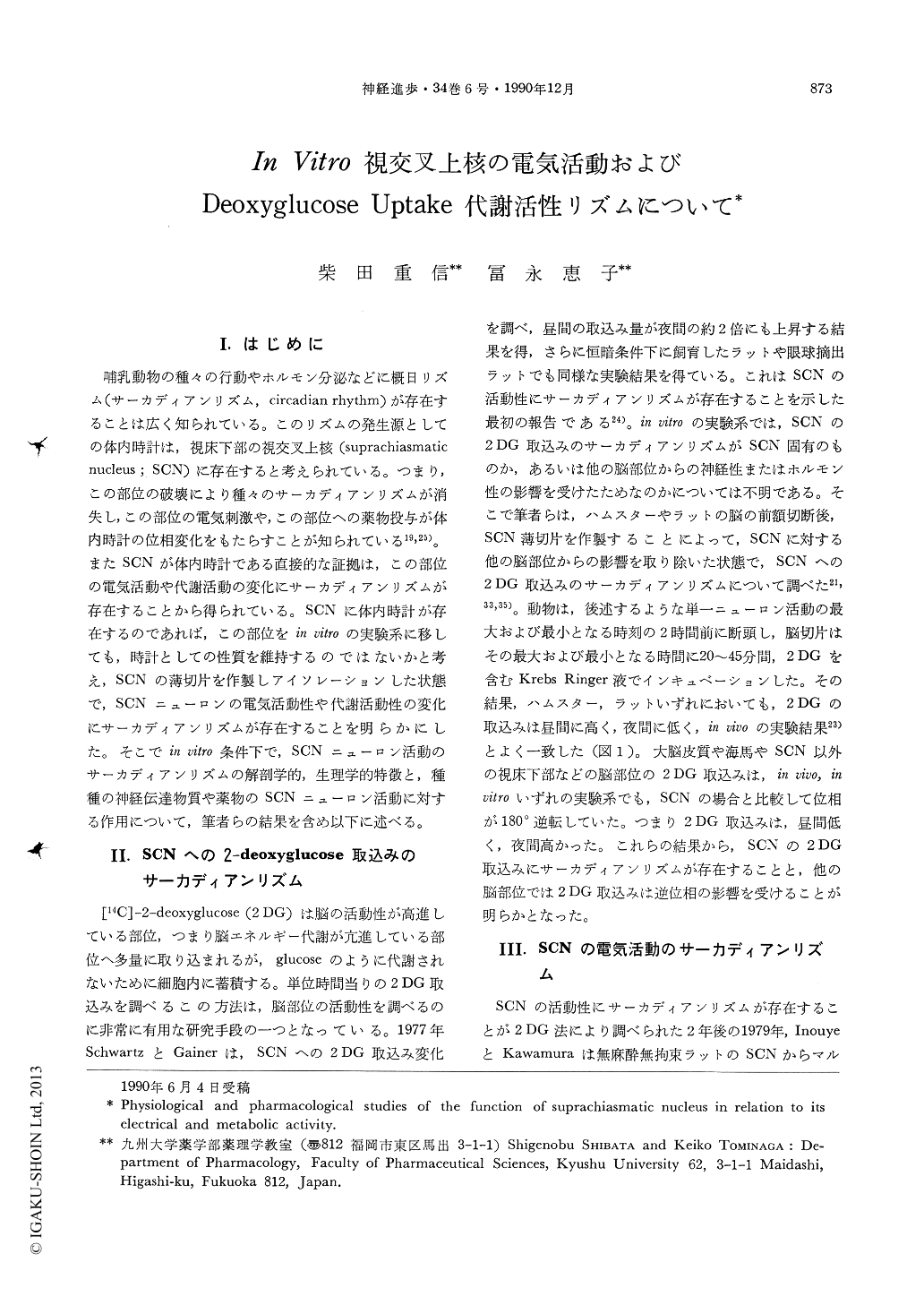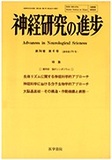Japanese
English
- 有料閲覧
- Abstract 文献概要
- 1ページ目 Look Inside
I.はじめに
哺乳動物の種々の行動やホルモン分泌などに概日リズム(サーカディアンリズム,circadian rhythm)が存在することは広く知られている、このリズムの発生源としての体内時計は,視床下部の視交叉上核(suprachiasmatic nucleus;SCN)に存在すると考えられている。つまり,この部位の破壊により種々のサーカディアンリズムが消失し,この部位の電気刺激や,この部位への薬物投与が体内時計の位相変化をもたらすことが知られている19,25)。またSCNが体内時計である直接的な証拠は,この部位の電気活動や代謝活動の変化にサーカディアンリズムが存在することから得られている。SCNに体内時計が存在するのであれば,この部位をin vitroの実験系に移しても,時計としての性質を維持するのではないかと考え,SCNの薄切片を作製しアイソレーションした状態で,SCNニューロンの電気活動性や代謝活動性の変化にサーカディアンリズムが存在することを明らかにした、そこでin vitre条件下で,SCNニューロン活動のサーカディアンリズムの解剖学的,生理学的特徴と,種種の神経伝達物質や薬物のSCNニューロン活動に対する作用について,筆者らの結果を含め以下に述べる。
It is now widely accepted that the suprachiasmatic nucleus (SCN) of the hypothalamus is a circadian pacemaker in the mammalians. This conclusion is based on three principal lines of evidence. First, ablation of the SCN results in a loss of circadian rhythms in rodents Second, the SCN exhibits rhythms in neuronal activity and glucose metabolism both in vivo and in vitro experiments Third, the transplantation of fetal SCN to the third ventricle of animals rendered arrythmic by SCN ablation restores circadian function.
We discuss in this review the physiological and pharmacological characteristics of SON neurons in vitro, and especially focus upon the role of various neurotransmitters and related drugs in electrical and metabolic activity of the SCN.

Copyright © 1990, Igaku-Shoin Ltd. All rights reserved.


